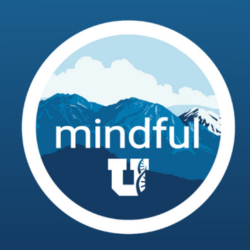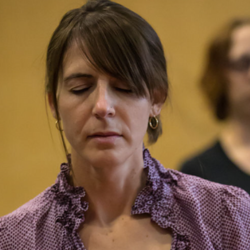indfulness allows us to attend to our present, unfolding moment with non-judgmental clarity. One of the most direct paths to the present is through the physical body, for the body is always in the here-and-now.
One way to develop this skillful awareness is through a formal mindfulness practice– intentionally dwelling in silent meditation for many minutes at a time while focusing on an anchor, such as the breath or a body scan. Though the benefits are many, developing this habit can be challenging.
Fortunately, we can connect meaningfully with our present moment, and thus derive similar improvements in personal well-being through informal mindfulness practices, whereby we focus our attention on integrating mindfulness into our daily activities of living. Examples of informal practice include slowing down the speed at which you walk from place to place while intentionally attending to the physical sensations of movement or hearing or site. Another example includes paying attention to bodily sensations as you complete various household tasks (appreciating the sensation of folding warm clothes just pulled from the dryer or washing dishes in warm, soapy water).
Three Mindful Breaths (TMB) is another simple informal practice that can bring an embodied presence through the breath portal.
Mindfulness in Medicine Toolkit

Click here for a list of resources you and your team can use to practice mindfulness and increase your well-being.
How to practice Three Mindful Breaths
TMB is best performed with the aid of an alarm or some other reminder to stop and attend to the breath. Many find the Breathe function on their Apple Watch, or some other recurring alarm on their cell phone, to be particularly helpful.
As you begin experimenting with TMB, consider setting a few alarms per day, realizing that there will be times when you are unable to take a moment to attend to three breaths, which is perfectly fine.
Be kind to yourself and do what you can.
Benefits accrue even if you do this once a day, as many of us have never brought a pointed awareness to breathing. We can learn by focusing on this life-sustaining function that often goes completely unnoticed.
Practice well-being

Click here for a simple mindfulness practice.

Click here for a simple breathing exercise.
When the alarm vibrates or beeps and you find yourself in a position to stop what you are doing, bring stillness to the body and awareness to the body breathing. Some find it helpful to place the palm of their hand against their chest or abdomen, allowing them to feel the rise and fall as air enters and leaves the body.
You can also bring awareness to the flow of air as it passes through the nose or mouth, or in the back of the throat. It is most important is to feel the breath wherever it is most prominent, counting three cycles of “in and out”. These breaths can be short or long, whatever feels right for the occasion. There is no wrong way to breathe.
The key with TMB is to simply bring awareness to the body breathing.
Over time and with practice, you will gain an appreciation in granular detail of breathing and how each and every breath taken during this practice, and during your life, is absolutely unique. At the completion of TMB, celebrate your attention to the body breathing itself, and then continue, with intention, on your path until the chiming of the next TMB alarm.
This program is supported by the Health Resources and Services Administration (HRSA) of the U.S. Department of Health and Human Services (HHS). The contents are those of the author(s) and do not necessarily represent the official views of, nor an endorsement, by HRSA, HHS, or the U.S. Government. For more information, please visit HRSA.gov.
Originally published November 2023
David Sandweiss
Mindfulness instructors Trinh Mai and Rob Davies guide us through S.T.O.P., a simple mindfulness practice to help mitigate our stress response.
Well-being expert and physician David Sandweiss explores the tangible sensations of earth, water, fire, and wind within you. Each element guides your awareness to the solidity of your bones, the fluidity of your breath, the warmth of your being, and the gentle breeze of your breath. By immersing yourself in these elemental experiences, you'll cultivate a profound sense of presence and gratitude for the miraculous intricacies of your own existence.
Osher Center for Integrative Health wellness programs manager Britta Trepp and employee wellness team graduate assistant Rachel Krahenbuhl share recent research findings that suggest decluttering the spaces where we live and work can have a positive impact on our personal success and well-being.

